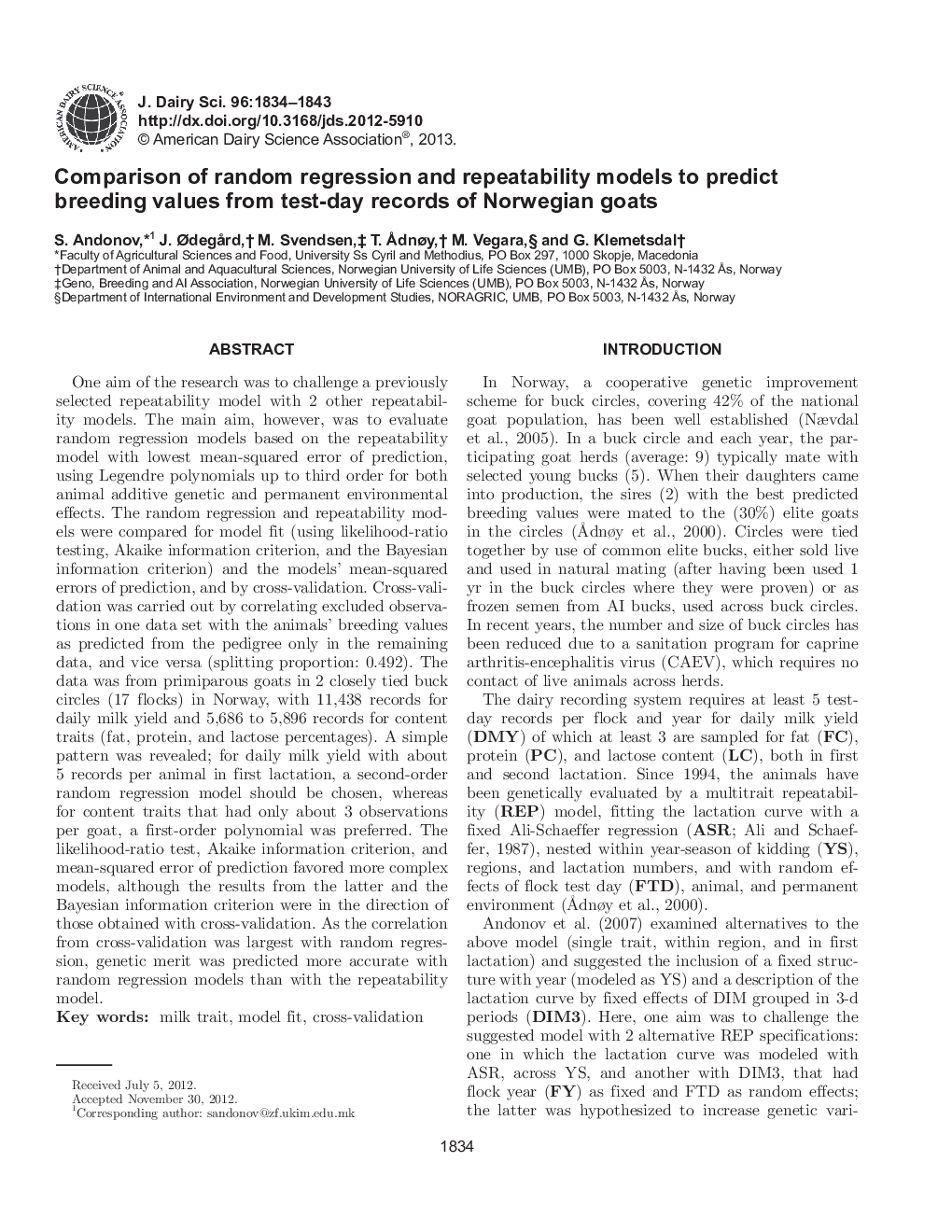| کد مقاله | کد نشریه | سال انتشار | مقاله انگلیسی | نسخه تمام متن |
|---|---|---|---|---|
| 10976233 | 1108039 | 2013 | 10 صفحه PDF | دانلود رایگان |
عنوان انگلیسی مقاله ISI
Comparison of random regression and repeatability models to predict breeding values from test-day records of Norwegian goats
ترجمه فارسی عنوان
مقایسه مدل رگرسیون تصادفی و مدل تکرارپذیری برای پیش بینی مقادیر پرورش از سوابق آزمایشی بز های نروژ
دانلود مقاله + سفارش ترجمه
دانلود مقاله ISI انگلیسی
رایگان برای ایرانیان
کلمات کلیدی
صفات شیر مدل مناسب، اعتبار سنجی متقابل،
موضوعات مرتبط
علوم زیستی و بیوفناوری
علوم کشاورزی و بیولوژیک
علوم دامی و جانورشناسی
چکیده انگلیسی
One aim of the research was to challenge a previously selected repeatability model with 2 other repeatability models. The main aim, however, was to evaluate random regression models based on the repeatability model with lowest mean-squared error of prediction, using Legendre polynomials up to third order for both animal additive genetic and permanent environmental effects. The random regression and repeatability models were compared for model fit (using likelihood-ratio testing, Akaike information criterion, and the Bayesian information criterion) and the models' mean-squared errors of prediction, and by cross-validation. Cross-validation was carried out by correlating excluded observations in one data set with the animals' breeding values as predicted from the pedigree only in the remaining data, and vice versa (splitting proportion: 0.492). The data was from primiparous goats in 2 closely tied buck circles (17 flocks) in Norway, with 11,438 records for daily milk yield and 5,686 to 5,896 records for content traits (fat, protein, and lactose percentages). A simple pattern was revealed; for daily milk yield with about 5 records per animal in first lactation, a second-order random regression model should be chosen, whereas for content traits that had only about 3 observations per goat, a first-order polynomial was preferred. The likelihood-ratio test, Akaike information criterion, and mean-squared error of prediction favored more complex models, although the results from the latter and the Bayesian information criterion were in the direction of those obtained with cross-validation. As the correlation from cross-validation was largest with random regression, genetic merit was predicted more accurate with random regression models than with the repeatability model.
ناشر
Database: Elsevier - ScienceDirect (ساینس دایرکت)
Journal: Journal of Dairy Science - Volume 96, Issue 3, March 2013, Pages 1834-1843
Journal: Journal of Dairy Science - Volume 96, Issue 3, March 2013, Pages 1834-1843
نویسندگان
S. Andonov, J. ÃdegÃ¥rd, M. Svendsen, T. Ã
dnøy, M. Vegara, G. Klemetsdal,
